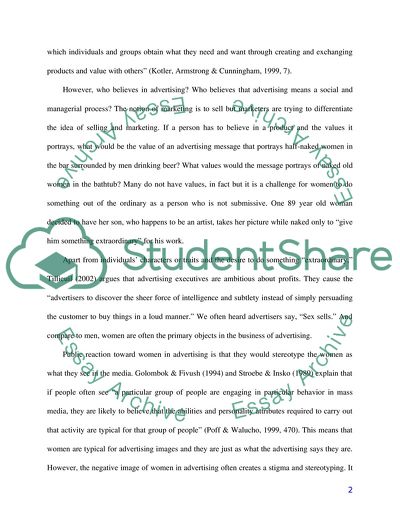Cite this document
(Women Image on Advertising Essay Example | Topics and Well Written Essays - 1500 words, n.d.)
Women Image on Advertising Essay Example | Topics and Well Written Essays - 1500 words. https://studentshare.org/social-science/1708122-subject-ethics-advertisings-image-of-women-using-normative-desicion-both-utilitarian-justification-and-right-based-justification
Women Image on Advertising Essay Example | Topics and Well Written Essays - 1500 words. https://studentshare.org/social-science/1708122-subject-ethics-advertisings-image-of-women-using-normative-desicion-both-utilitarian-justification-and-right-based-justification
(Women Image on Advertising Essay Example | Topics and Well Written Essays - 1500 Words)
Women Image on Advertising Essay Example | Topics and Well Written Essays - 1500 Words. https://studentshare.org/social-science/1708122-subject-ethics-advertisings-image-of-women-using-normative-desicion-both-utilitarian-justification-and-right-based-justification.
Women Image on Advertising Essay Example | Topics and Well Written Essays - 1500 Words. https://studentshare.org/social-science/1708122-subject-ethics-advertisings-image-of-women-using-normative-desicion-both-utilitarian-justification-and-right-based-justification.
“Women Image on Advertising Essay Example | Topics and Well Written Essays - 1500 Words”. https://studentshare.org/social-science/1708122-subject-ethics-advertisings-image-of-women-using-normative-desicion-both-utilitarian-justification-and-right-based-justification.


